Speaker
Description
The Swedish Materials Science beamline (SMS) located at the PETRA III synchrotron storage ring (DESY Hamburg, DE) is dedicated to materials research using high-energy X-rays. The beamline consists of an inline branch (P21.2) and a side branch (P21.1), which are operated in parallel and are optimized for a combination of techniques and broad band diffraction, respectively. The inline branch P21.2 operates in the energy range of 40 - 150 keV and is designed for the combination of WAXS, SAXS, and Imaging techniques. Due to high-energy photon beam available at the P21.2 it is perfectly suited for the investigation of highly disordered materials by means of pair distribution function (PDF). The PDF, which characterizes material’s atomic structure in real r-space, is obtained by a sine Fourier transform of the structure factor S(q), which refers to X-ray scattering power of a given material in reciprocal q-space. The quality of PDF is determined by the coverage of reciprocal space (q-range) and resolution (dq). It is impossible to improve both parameters simultaneously since there is an inverse relationship between them. Performing an X-ray scattering experiment with high energy photon beam using a large two-dimensional (2D) detector positioned at a short sample-to-detector distance helps to acquire scattering data up to large magnitudes of wave momentum transfer vector q, which implies a good resolution of PDF in lower range of r-space. This is fine for materials which are having structures with short range order. However, it poses a challenge for materials with larger degree of structural order such as nanocrystalline materials.
In this contribution we present systematic study of reciprocal space resolution of 2D XRD setup implemented at the P21.2 beamline. Beam size, sample thickness and sample-to-detector distance were identified as key parameters, mostly affecting reciprocal space resolution. Few series of 2D XRD patterns were taken on powder LaB6 standard sample with a monochromatic photon beam having energy of 81.84 keV. Beamsize (square profile) was set to four distinct sizes 0.1, 0.3, 0.5 and 1.0 mm. Sample thickness was set to 0.4, 1.0, 1.5 and 2.0 mm. Sample-to-detector distance was changed from 460 to 1800 mm (10 values). Scattered photons were acquired by 2D detector VAREX XRD4343CT (2880 x 2800 pixels, pixel size 150 μm x 150 μm, 16bit intensity resolution). Altogether 160 (4x4x10) patterns were acquired and used in analysis. Each 2D XRD pattern was radially integrated, and its peak profiles were analyzed with pseudo-Voigt function. Instrument resolution function, i.e. variation of the peak full-width at half-maximum with Bragg angle 2theta, was investigated as a function of the beam size, sample thickness and sample-to-detector distance.
The Authors gratefully acknowledge the contribution of the Slovak Research and Development Agency under the project APVV-21-0387.

